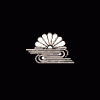-
Posts
925 -
Joined
-
Last visited
-
Days Won
23

Markus replied to Marked Hamon's topic in Translation Assistance

Markus replied to Marked Hamon's topic in Translation Assistance

Markus replied to Markus's topic in General Nihonto Related Discussion

Markus replied to Adrian S's topic in Sword Shows, Events, Community News and Legislation Issues

